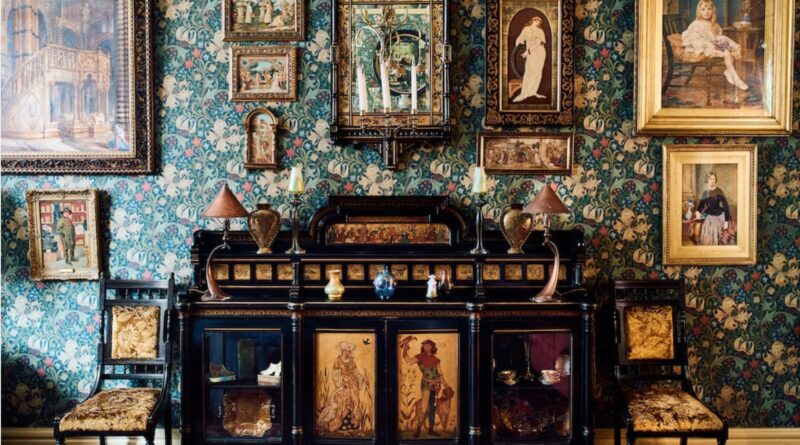Design sale tops a million
A stained oak Charles Rennie Mackintosh stool from Miss Cranston’s Argyle Tea Rooms smashed its estimate to lead Lyon & Turnbull’s £1m Design Since 1860 Sale. The rare survivor sold to a UK collector for £81,450 after a raft of international bidding.
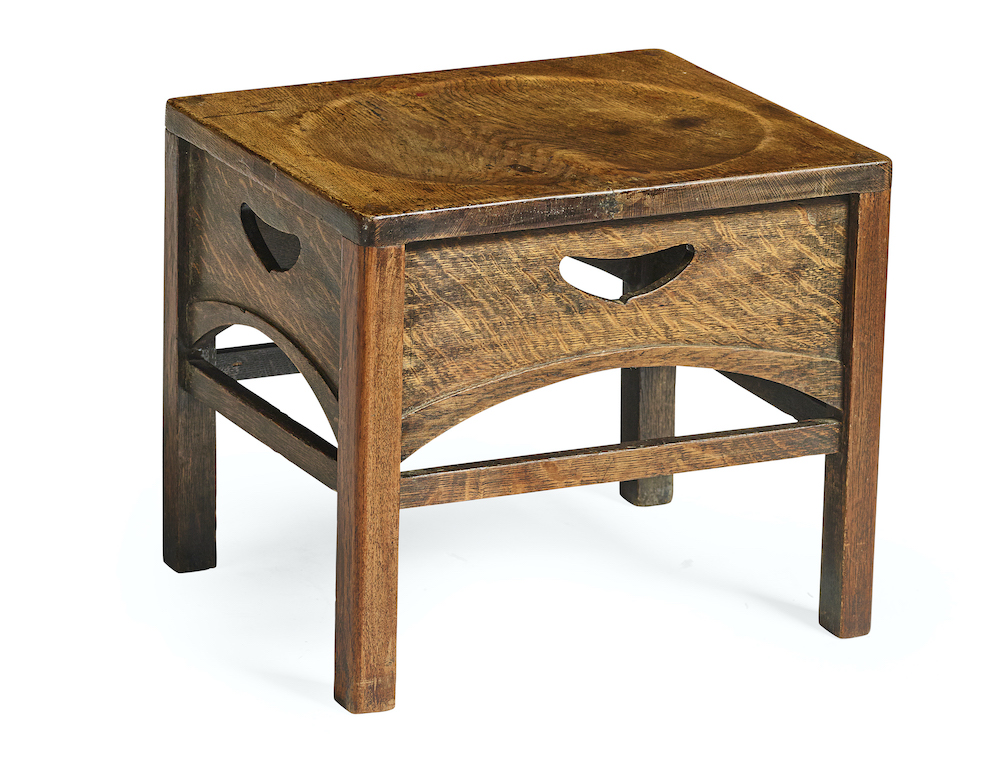
Combining English Arts & Crafts and Scottish vernacular design, Mackintosh produced several types of seating for the Argyle Street project in 1898 including his iconic tall back dining chair. The stools were only used in the masculine domain of the Billiards and Smoking Rooms, which occupied the building’s top two floors.
The Argyle Street Tea Rooms closed in 1920 when much of the furniture was dispersed. This stool, that is illustrated in Roger Billcliffe’s catalogue raisonné of Mackintosh furniture, came from a private collection in Glasgow.
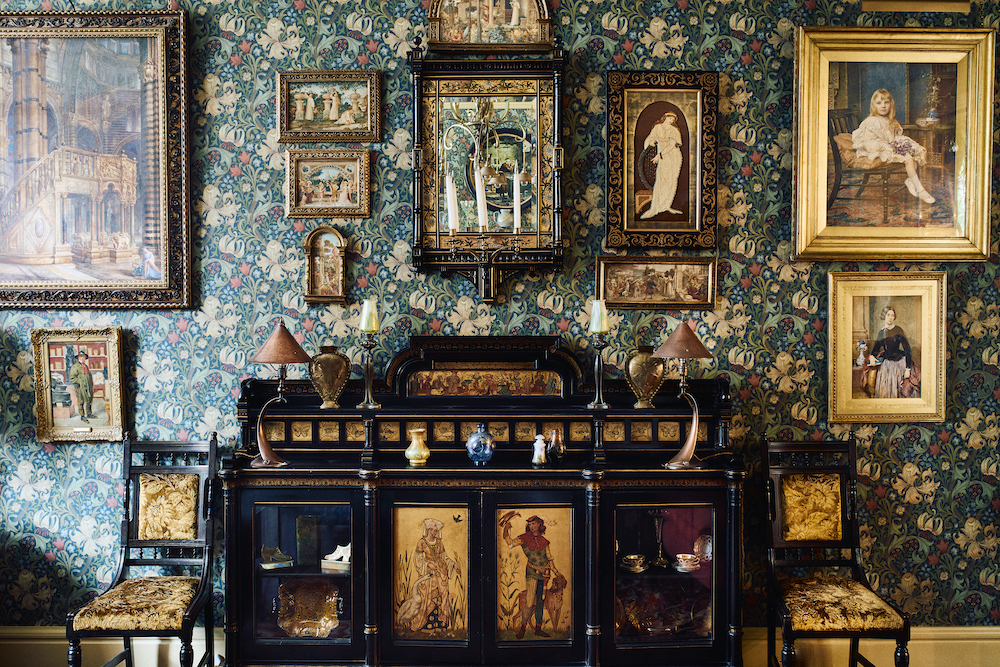
The Design since 1860 auction, held live from Edinburgh and online on October 16-17, began with a single owner collection titled An Aesthetic Interior: The Contents of a London Apartment. “It was a beautiful collection,” said Head of Sale John Mackie. “Lovingly put together over nearly 50 years and knowledgeably and skilfully arranged in a ravishing period interior. Collectors from all over the world responded to the quality of the objects on offer”.
Highlights among a selection of wares by WAS Benson included a Mistletoe pattern chandelier, c.1899, which sold at £9,450 while the wares of William de Morgan were topped by a pair of large 15 x 23cm fish pattern tiles from the Merton Abbey period c. 1885, which fetched £8,820.
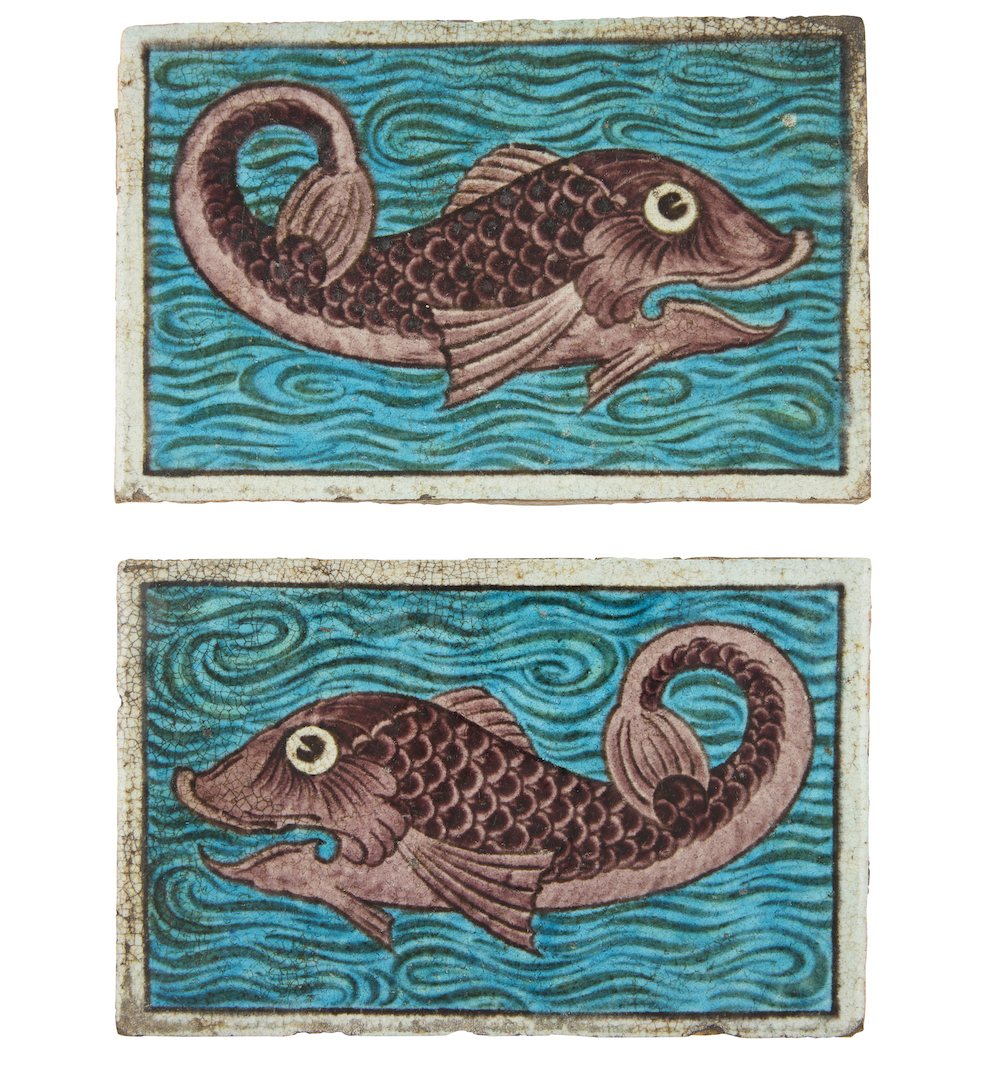
Sold for £10,710 – a collection-topping price it shared with a pair of Tiffany Studios bronze and favrile glass lamps – was an ebonised drawing room cabinet made c.1862 by the London art furniture specialists Cox & Sons.
The firm worked with many leading designers of the time including Bruce Talbert and John Moyr Smith who may have provided the series of polychrome and gilt painted panels that adorned a gallery frieze and two of the panel doors. The premium-inclusive total for the collection was £258,186.
There were several fine examples of Arts & Crafts furniture, led by a beautiful and rare Arts & Crafts coffer designed by Henry Wilson exceeded expectations at £16,380. Made by Somerset craftsman W.E. Micklewright it had previously never left Norton-sub-Hamdon, the small village where it was made c.1920. The design featuring 12 panels carved with the signs of the zodiac is one illustrated in a surviving catalogue from the Micklewright workshop that ran for around five years until closure in 1925.
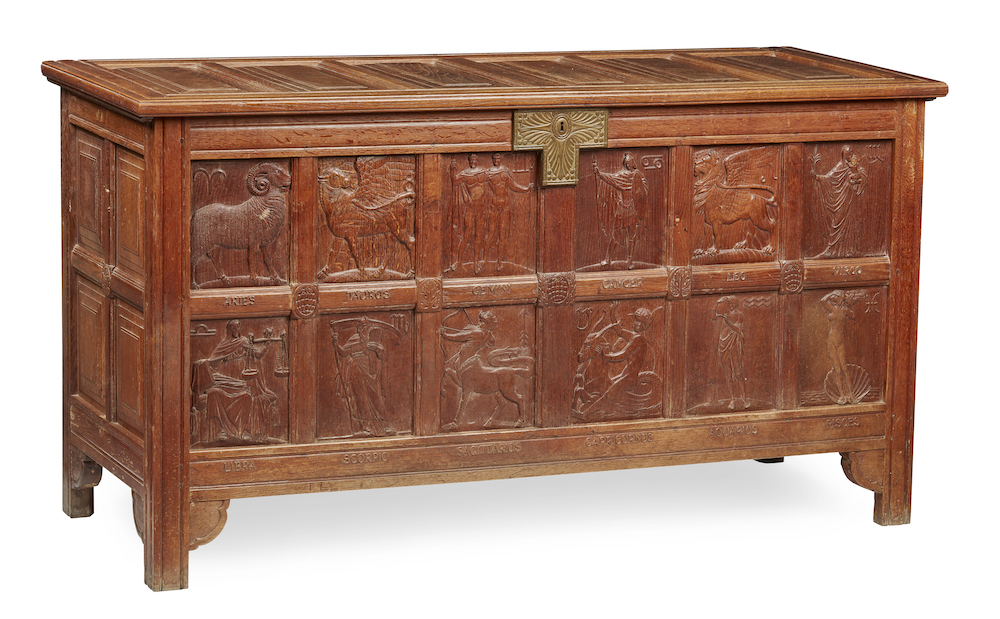
Sold for £8,000 was an Arts and Crafts Daffodil dresser designed by Mackay Hugh Baillie Scott. The floral roundels inlaid and painted to the two doors give the piece its name. This piece dates from c.1901, the year Baillie Scott moved from the Isle of Man, where he lived for several formative years, to Bedford where he could be close to his friend and collaborator, John White. At the time the dresser was crafted in White’s workshop, the Pyghtle Works, Baillie Scott was completing his architectural masterpiece, the Blackwell country house near Windermere.
An oak Arts and Crafts low side cabinet made in the Stanley Webb Davies workshop in the Lake District, signed and dated 1927, sold for £5,292 while there was plenty of bidding for a rare pre-war form by Robert ‘Mouseman’ Thompson, a bespoke games table dated 1936 that sold for £8,190.
A group of pieces from the New Sculpture movement, including several bronzes from the estate of art historian Susan Beattie, was led by Gilbert Bayes’ An Invocation, which fetched £18,900.

This possibly unique 70cm bronze was exhibited on several occasions between 1902 (at The Fine Art Society where the plaster version sold for £40) and 1915 when it was sold by The Sculpture Gallery.
Sold for £7,560 was a rare Aesthetic movement silver pitcher derived from designs created by Christopher Dresser during his tenure as ‘Art Superintendent’ at the Linthorpe Art Pottery from 1879-82. The shape is likely influenced by Mycenaean or Cycladic pottery.
A handful of Dresser designs are known to have made the transition from pottery to silver although they may have been special commissions. This jug marked for William Hunter & Son (London 1881) has the engraved initials under the base ECS.
A large 4.32m x 4.97m Arts and Crafts carpet to a design by CFA Voysey took £16,380.
In 1897, Voysey had agreed a contract with Alexander Morton & Co. to provide designs for a minimum of ten textile designs each year for five years. Many of his carpet designs, including this one titled Fintona c.1903. were woven in the newly established workshop in Killybegs, Donegal.
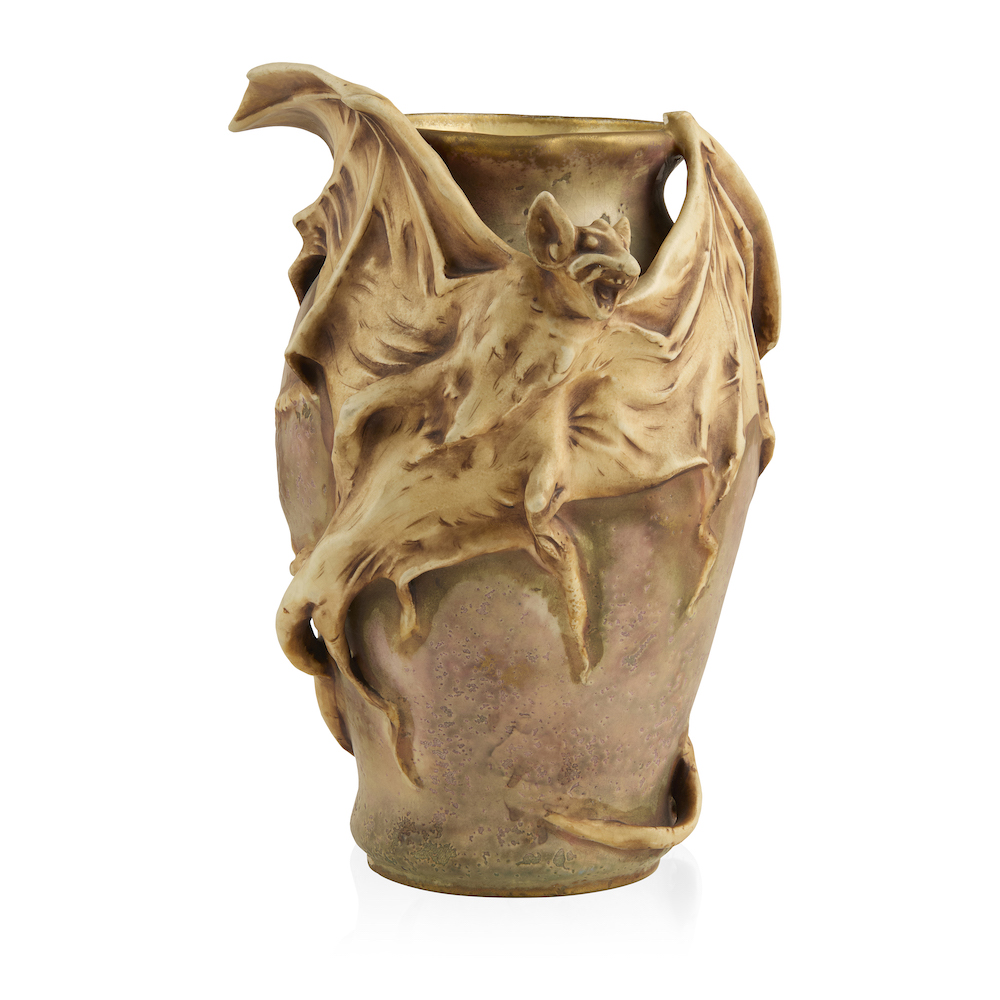
Among the art pottery lots was one of Robert Wallace Martin’s much admired anthropomorphic bird jars being sold in aid of St Mary’s Music School Trust – dated to both the base and the head for April 1899 this 24cm model sold at £13,860 – while a remarkable price was achieved for one of the most innovative designs by the Amphora factory in Bohemia. Another version of the 26cm Bat vase, created by the sculptor and ceramist Eduard Stellmacher c.1905, is pictured in Monsters and Maidens: Amphora Pottery of the Art Nouveau Era (Byron Vreeland, 2011) where it is described as very rare. This example here in a cream, brown and mauve glaze raced away to bring £18,900.
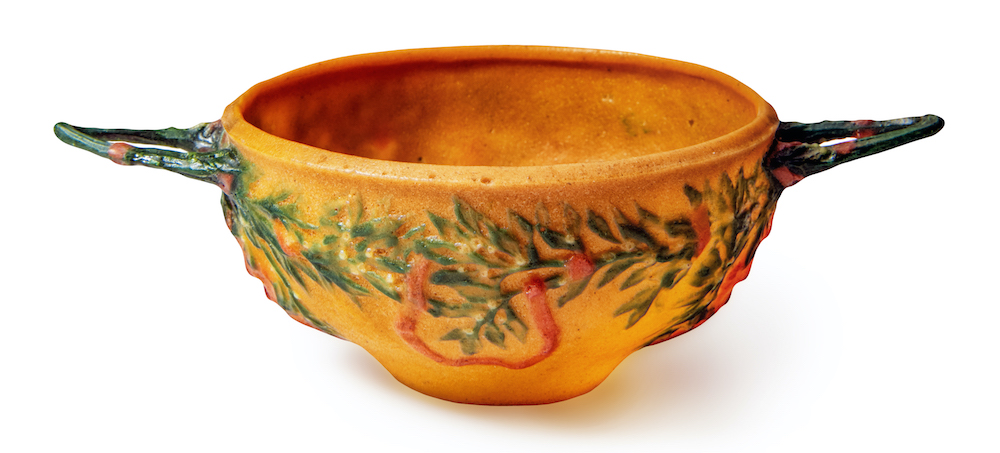
From a collection of French art glass was a small 14cm two-handled bowl by Francois-Emile Decorchement, the master of the pâte de verre or glass paste technique. This model, from an edition of just 16 made in 1909-11, proved the best of three pieces by the Conches-en-Ouches maker, selling for £5,544.
“We are delighted with the results of this auction with strong prices across the disciplines, reflecting the strength in the market for early design,” said John Mackie.

